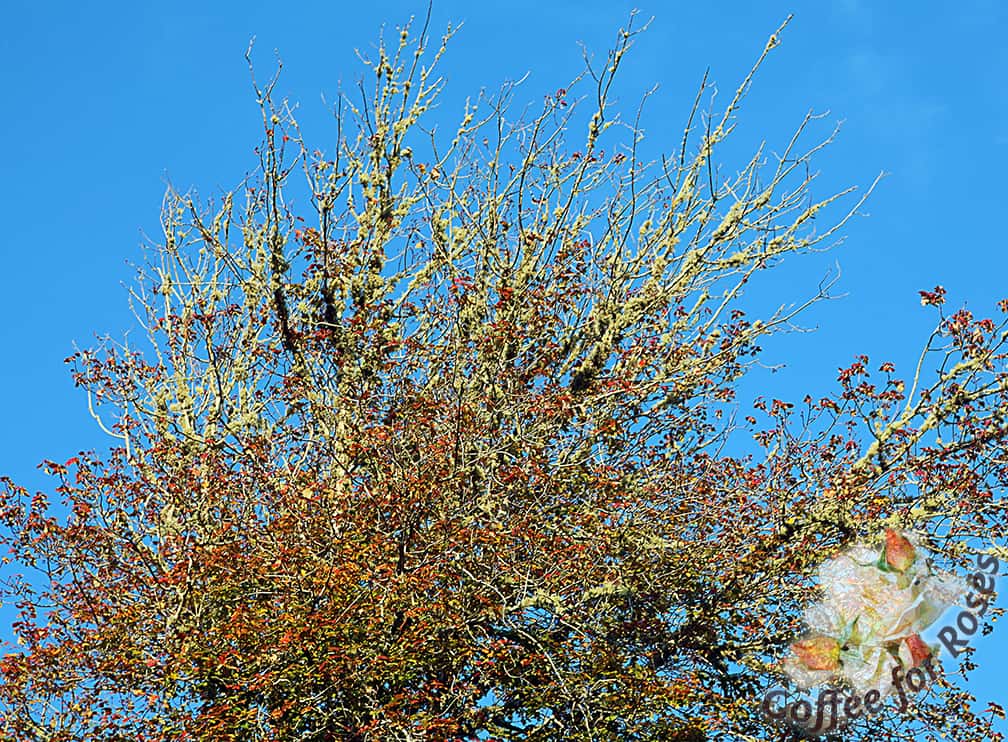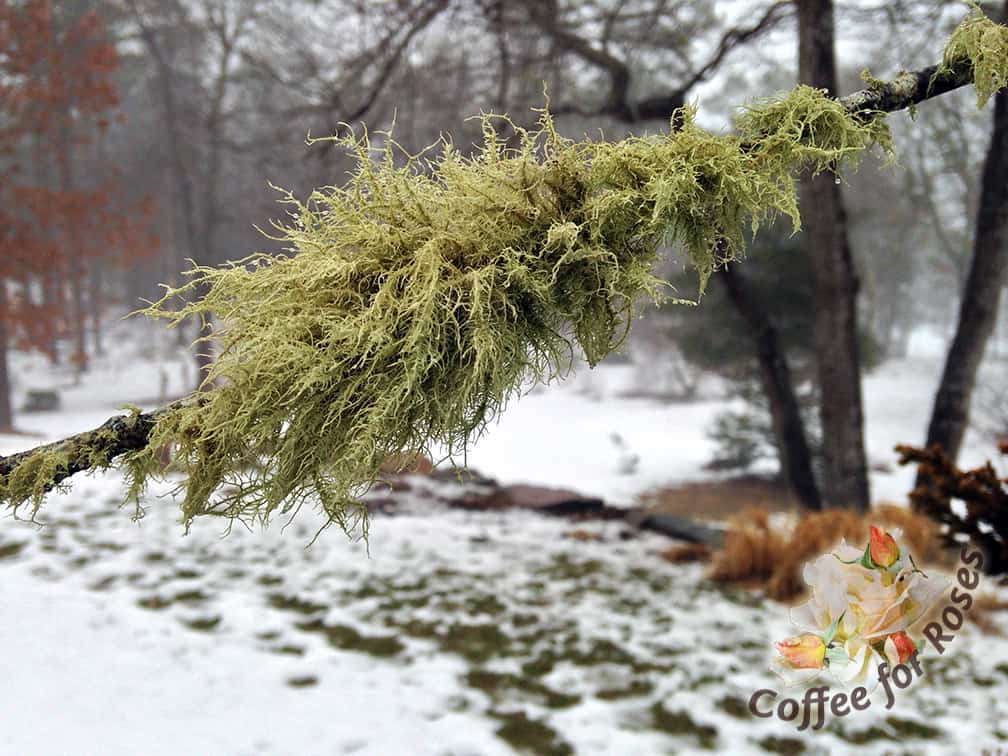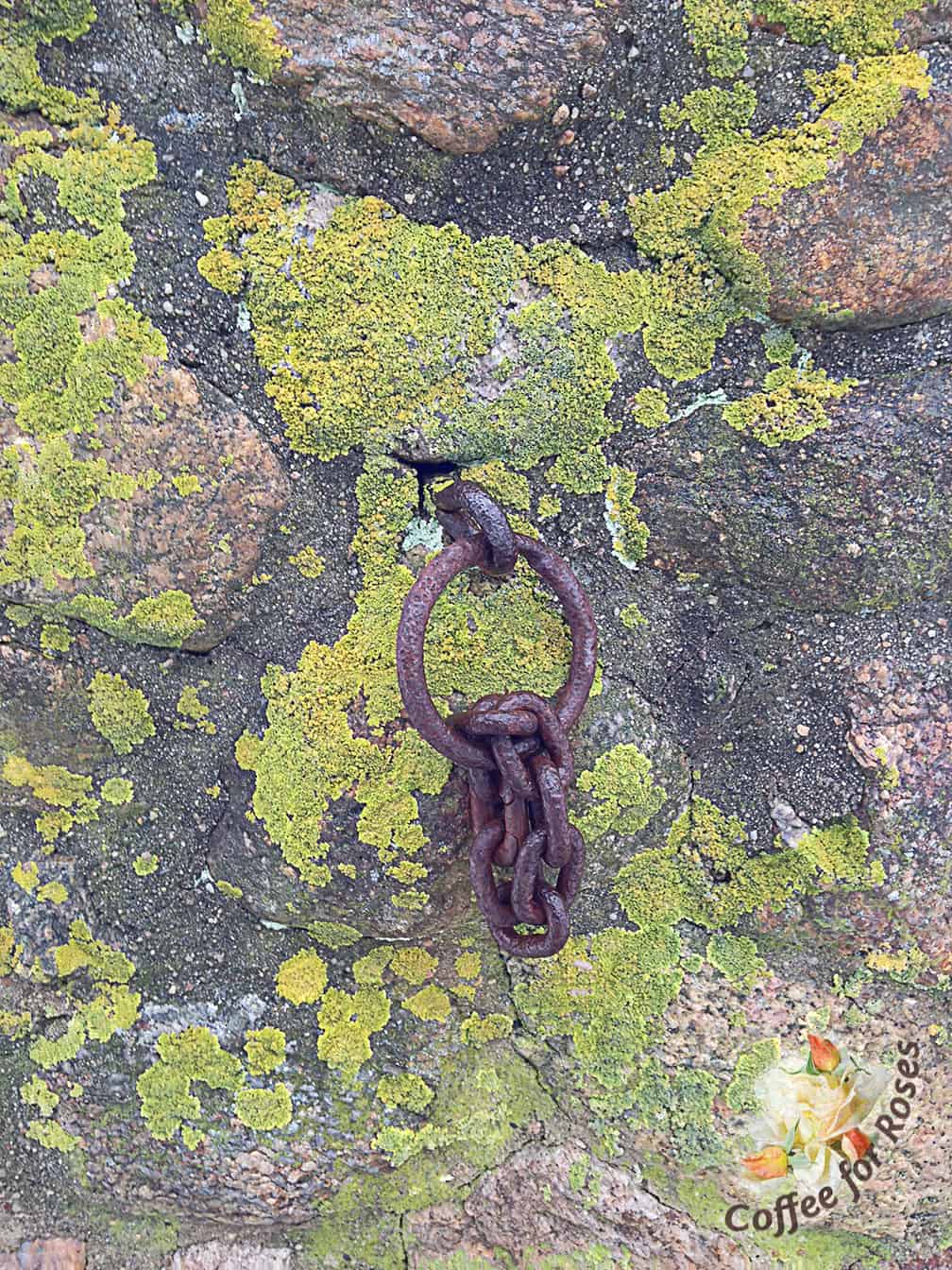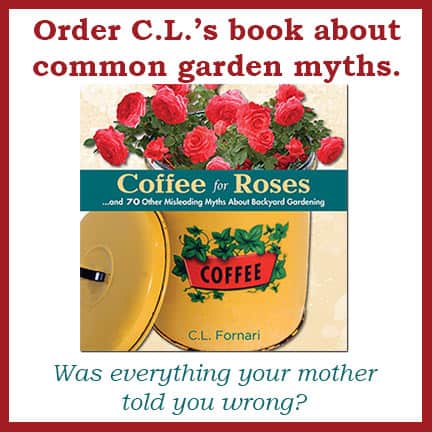One of the questions that I hear from callers and clients goes something like this: “The branches are covered with moss and I think it’s killing my trees.” Or shrubs. They have noticed that some of their plants are looking thinner, or bare, and that the stems are also covered with fuzzy green stuff. Is this moss like coating causing the decline of the shrubs or trees?
What these people are noticing is not moss, but lichen. There are many colors, types and sizes of lichen and although they are plant-like (they photosynthesize) they are not actually plants. Simply put, when algae or cyanobacteria, or the two together, get together with a fungus, these new BFF’s form a lichen and live happily ever after, creating their nourishment from sunlight, water, air and surrounding minerals. They are epiphytes, not parasites, meaning that they live on plants or other surfaces but don’t take any nourishment from those support structures.
At this time of year we notice lichen because other foliage is dying away and since there is often more frequent rainfall, the lichen swell and are more showy. The trees and shrubs that are thinner have more lichen because their reduced foliage allows more sunlight in and the lichens are better able to grow. Those plants that are under stress from drought, storms, insect pests or diseases are more likely to be a host to lichen just because they have fewer leaves so the lichen takes advantage of the increased sunlight.

This is typical of lichen growth on Cape Cod right now. Similar to this swamp maple, many of our trees have been defoliated year after year by the winter moth larvae. The tops of such trees have experienced dieback, and this leaves bear branches where the lichen has the support, sunlight and access to rainfall that it needs. But the dieback came first…it was not caused by the “moss in the tree tops.” Although people often call it “moss”, lichens are not moss.

Lichens come in a variety of colors. Some are very small (microlichens) and other large (macrolichens). They use stems, trunks, stones and even roof shingles as a place to grow but they don’t take any nutrients from those support structures.

This type of lichen is often called “old man’s beard.” I love how soft this type of lichen is after a fall or spring rain. When branches covered with this lichen fall off of my trees I frequently use them in holiday and winter decorations.

Lichen is most striking after a rain when it swells and becomes even more colorful.
Throughout history lichen has been used to dye yarn and cloth, but it has also been used medicinally in many countries and cultures. Gardeners appreciate them for their appearance. Lichens are quite beautiful, and noticing that beauty requires us to slow down, look closely, and pay attention.



